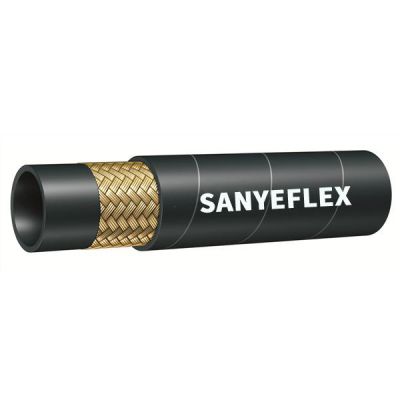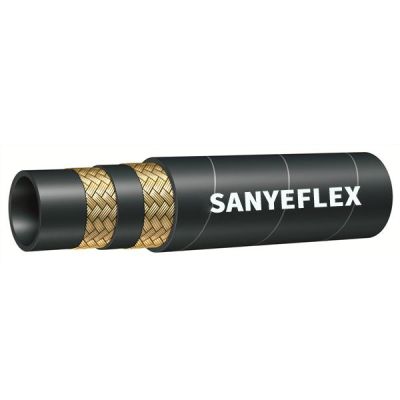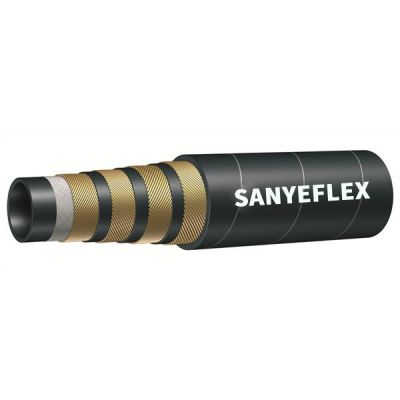Nov. 07, 2024
Steel braided hoses, known for their durability and resilience, play a crucial role in various industries, from automotive and manufacturing to aerospace and marine applications. However, like all components, these hoses have a finite lifespan and require regular inspection and replacement to ensure continued safety and performance. In this article, we delve into the factors that influence the replacement interval for steel braided hoses and provide guidance on maintaining their reliability.
The frequency of replacing steel braided hoses varies depending on several factors, including the application, environment, usage, maintenance practices, and the specific type of hose. Here are key considerations to keep in mind:
1. Application and Usage
The type of application and the level of stress the hoses undergo play a significant role in determining replacement intervals. Hoses used in high-pressure hydraulic systems or critical applications might need more frequent replacement due to the increased wear and strain they experience.
2. Environmental Conditions
The environment in which the hoses operate can significantly impact their lifespan. Hoses exposed to extreme temperatures, corrosive chemicals, saltwater, or abrasive materials may wear out faster. Corrosion and deterioration caused by environmental factors can weaken the hose's structure and necessitate more frequent replacements.
3. Maintenance Practices
Regular maintenance, including inspection, cleaning, and lubrication, can extend the lifespan of steel braided hoses. Hoses that are well-maintained are less likely to develop issues that could lead to premature failure. Neglecting maintenance can shorten the lifespan of hoses and increase the likelihood of unexpected failures.
4. Flexibility and Movement
Hoses that undergo frequent bending, twisting, or movement are subjected to additional stress, which can lead to wear and fatigue. In applications where hoses are subjected to constant movement, replacement intervals might be shorter to prevent sudden failures.
5. Manufacturer Recommendations
Manufacturers typically provide guidelines for the expected lifespan of their hoses based on various factors. It's important to consult these recommendations and adhere to them for optimal performance and safety.
While specific replacement intervals can vary, there are clear signs that indicate it's time to replace steel braided hoses:
Visible Damage: If you observe visible cracks, bulges, fraying, or signs of wear on the hose's outer surface or the steel braiding, it's a strong indication that replacement is needed.
Leaks: Leaks at connections, fittings, or along the length of the hose indicate damage or deterioration that requires immediate attention.
Soft or Spongy Hoses: Hoses that feel unusually soft or spongy when pressure is applied might have suffered internal damage or loss of structural integrity.
Reduced Performance: If you notice a decrease in the performance of the system the hose is a part of, such as decreased fluid flow or pressure loss, it could be due to hose wear.
Age: Even when hoses appear visually intact, their age can impact their performance. Hoses that have been in service for an extended period might have experienced internal degradation that's not immediately visible.
In conclusion, determining how often steel braided hoses should be replaced is not a one-size-fits-all equation. It depends on a combination of factors, including application, environment, usage, and maintenance practices. Regular inspection, maintenance, and adherence to manufacturer recommendations are crucial for extending the lifespan of these hoses and ensuring their reliable performance. Being proactive about replacement can prevent unexpected failures, minimize downtime, and contribute to the safety and efficiency of operations across industries. Remember, when in doubt, consulting with hose manufacturers or industry experts can provide valuable guidance tailored to your specific use case. We are a steel wire braided hydraulic hose supplier. If you are interested in our products, please contact us now!
Previous: What is Dredging Hose?
Our Customer
Tel.: +86 400 0318 111
Email: admin@sanyeflex.com
Add.: #218 Zhongke Street, High-tech Zone, Hengshui City, Hebei Province, China



